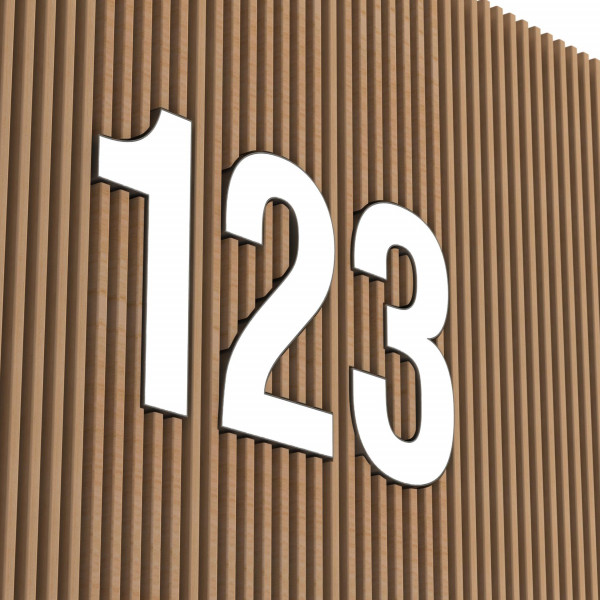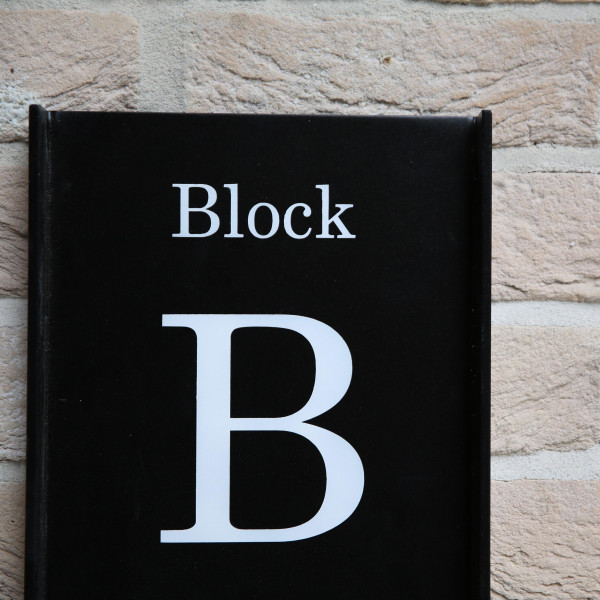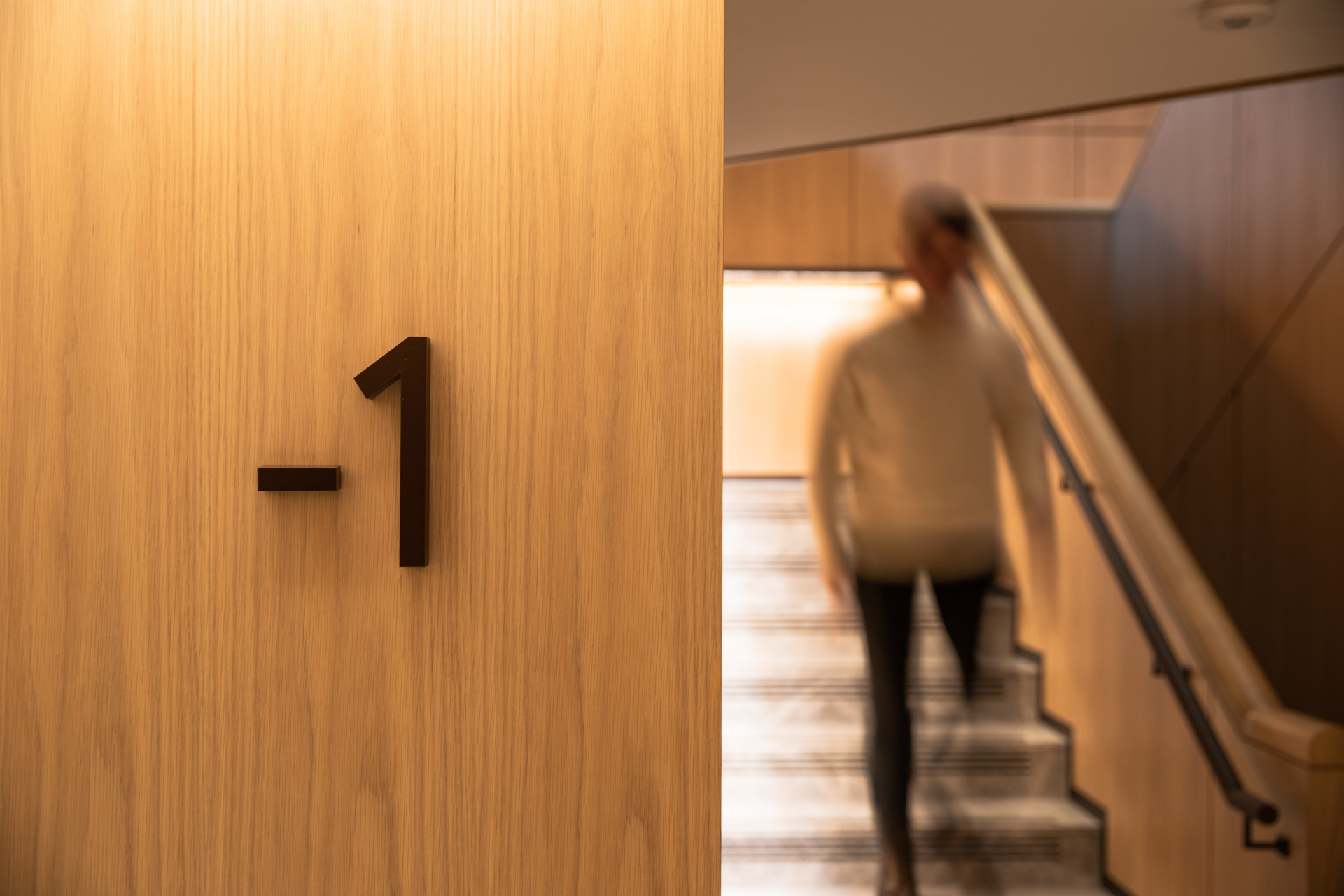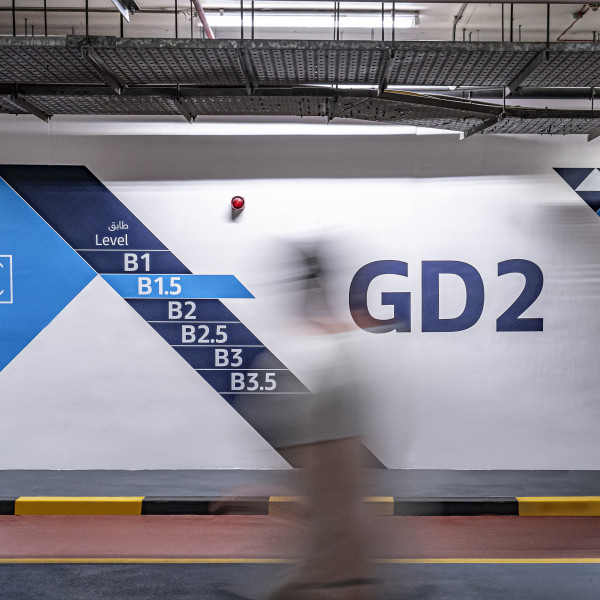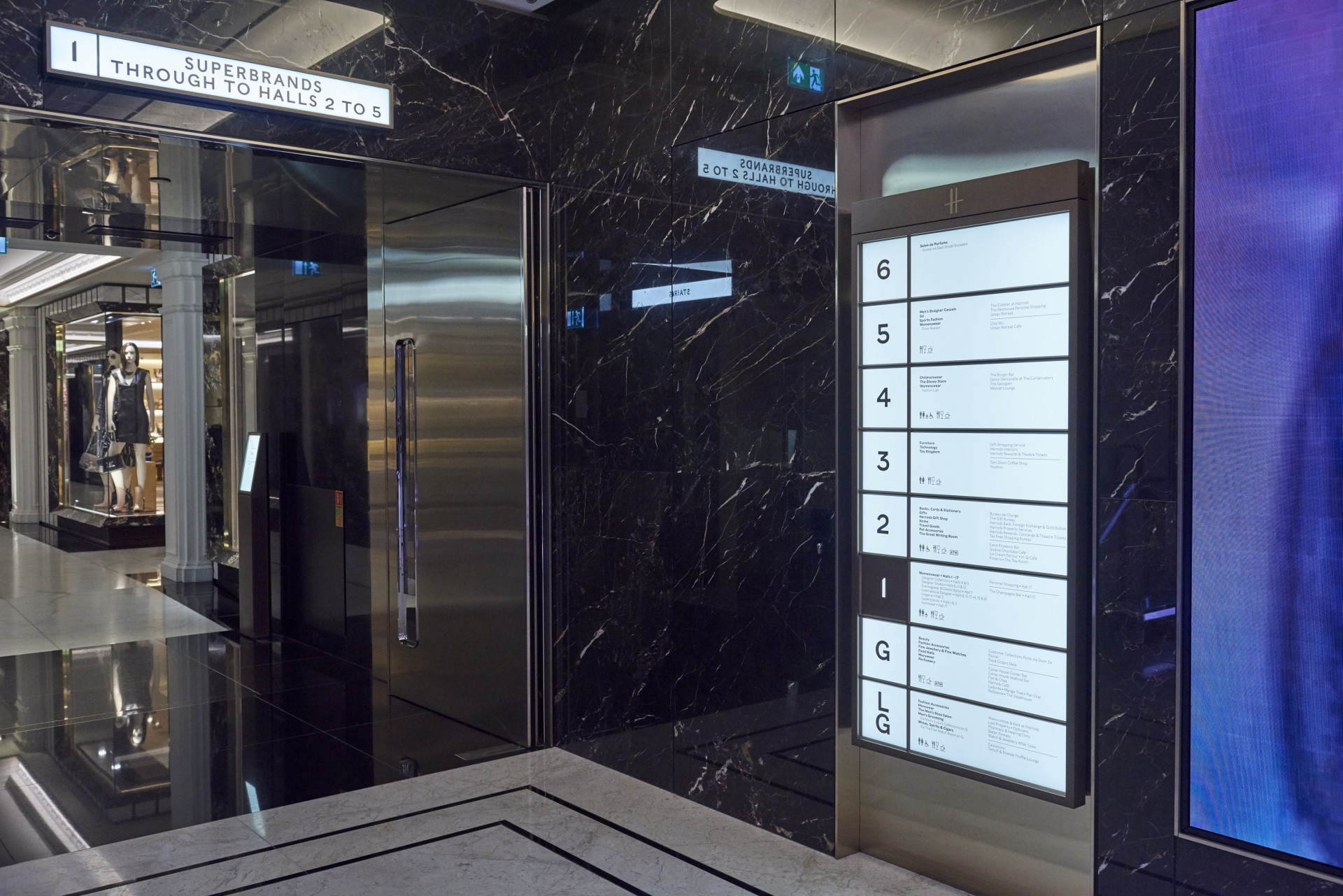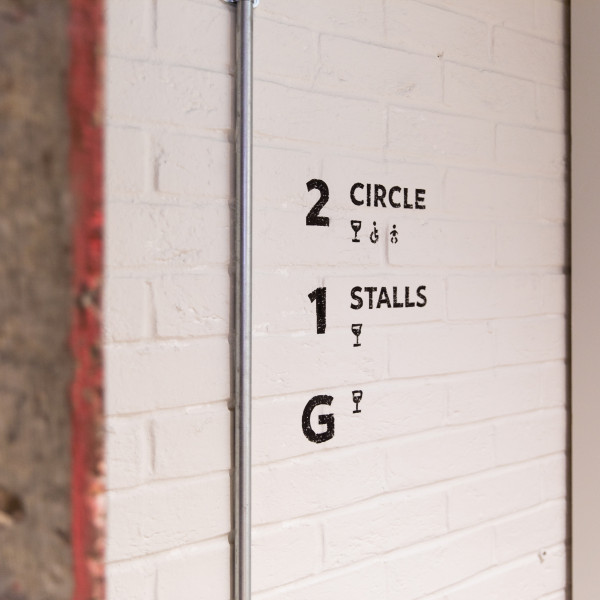Numbering system in wayfinding
A numbering system is an agreed way of writing numbers, symbols or letters within a particular geographic location or culture to represent values based on a universally agreed sequence, such as 123 or ABC.
Whenever there is a series of similar things within a space, a consistent and straightforward numbering system is needed. It makes our life simpler and provides order to disorder.

The importance of a numbering system in wayfinding
With the appropriate numbering system in place, a person can orient themselves within a series of numbers and decide which direction to go, while at the same time estimating the distance remaining to their destination. Numbers are simple, concise and straightforward which makes them easier to use in any environment but most especially within complex spaces.
Let’s take an international airport as an example. In an airport, the terminals are always numbered (in addition to names) because they are much easier to recognize, remember and pronounce. In addition, limited space on signs makes it difficult (almost impossible) to show long or multiple names, but a sequence of numbers can easily be shown.
Blocked circulation creates bottlenecks causing overcrowding, which in some circumstances can even be dangerous. In such busy spaces, people need to move quickly without spending a lot of time reading signs. Numbering provides simple and straightforward information that leads to smoother circulation.
Cultural traditions and local conventions’ impact on numbering systems
1) Numbering conventions
In Dubai, the floor and room numbering system are approved by Civil Defence which all buildings must comply with. For example, apartment number 1008 means room 8 on the 10th floor. In Hong Kong, most of the buildings also use a similar approach of using the floor number plus the room number. This is a common approach practised in most hotels and buildings worldwide which demonstrates it as being a best practice.
The naming of floors however is where the differences can be perceived. In many countries or regions such as the Middle East floors are named G, 1, 2, 3, and so on. However, in the Philippines, there is a mixture of systems, either missing out on the ‘G’ floor or level 1. This means floor sequences begin either G, 2, 3 or 1, 2, 3. In the US, the ground floor (G/F) is actually level 1, while in France it will be level 0.
Underground parking levels in the Middle East are typically denoted with a P or B such as P1 or B2 and will never go into minus numbers. In contrast, in many European countries, underground levels are often referred to using minus numbers such as -1 and -2.
While creating a level numbering system, it is very important to take into consideration all the components of the development especially if a project is built in phases. It is very common, architecturally speaking, that retail floors in malls will have double-height ceilings to create a welcoming and spacious environment, while parking floors will have lower ceiling heights to maximise the number of slots. This creates discrepancies in floor level numbering when a parking level P5 gets connected to a mall level 2, which causes confusion to visitors when trying to find their car back.
2) Superstitions
Even today, superstitions around particular numbers have an impact on numbering systems in different parts of the world. In European countries, the number 13 is usually viewed as unlucky and the reason why some hotels skip room number 13. The same is true in Thailand, where hotels rename the thirteenth floor ‘12A’. In China, the number 8, which sounds like the character used to denote ‘well-off’, is considered the luckiest number. This number then gets assigned to the best room in a hotel or building such as a penthouse apartment. As evident in past projects we have worked on, as well as places we’ve lived and travelled to, there are always different beliefs around lucky or unlucky numbers which can also vary from person to person.
3) Vernacular language differences
We have worked on projects globally and dealing with the language difference is a given challenge. Although English is one of the world’s most common languages, many countries do have their own language system and alphabet. For example, most of our projects in the UAE use both English and Arabic letters in naming. This also applies when we work on projects in China, Thailand, and Cambodia. When we introduce the numbering sequence for multilingual information, we mostly combine numbers (123) together with English letters (ABC) rather than the local alphabet to avoid confusion.

Implementing a numbering system in wayfinding
A general principle of a numbering system is to follow local conventions regarding reading direction. English is read from left to right, so in the UK we aim to assign the low number on the left and the high number on the right. We also use odd and even numbers to make the sequence easier to follow.
As we have seen numbering systems are there to help enhance user experience (UX). When a numbering system doesn’t make sense, it can cause chaos. Therefore, it is important that as wayfinding experts, Endpoint is involved early on in a project, where we can then plan and adapt the numbering system in response to not only the current but more importantly future project needs, delivering a long-term solution for all types of projects, large and small.
In the UK, an address needs to be passed to Royal Mail ahead of construction so they can generate postcodes. If we are brought in late to a project, the numbering is sometimes already agreed, upon and not always in the most logical manner which makes addressing overly complicated and difficult to remember.
In an ideal world, we propose the numbering system at the strategy stage to make sure that it is effective, consistent, and future-proof. For clients and developers, getting the numbering system right from the start creates a holistic and logical approach that alleviates confusion and abortive work particularly when key changes or cultural nuances arise later on.
Discover how Endpoint can enhance your large-scale construction project with bespoke wayfinding services, including a consistent numbering system. Contact us today.

